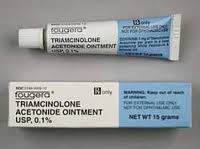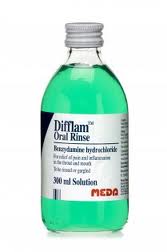In the previous article “about ulcers of the mouth Part 1“, we have already discussed what is an ulcer, the causes and methods to identify the cause of an oral ulcer. In this next section we will be looking at the modailities used to treat ulcers of the mouth.
Treatments and home remedies for mouth ulcers
Treatment:
- Based on and targeted at the etiology
- Main goal of therapy: Relief of pain and reduction of ulcer duration. There are evidence that shows the most efficacy from corticosteroids and antimicrobials used topically.
1. Topical corticosteroids:
- Topical corticosteroids reduce painful symptoms but not the rate of ulcer recurrence. The commonly used preparations are as follows:
i) Triamcinolone acetonide in carboxymethyl cellulose paste(Adcortyl in orabase, Kenalog), administered 4 times daily.Carboxymethyl cellulose paste acts as the medium of adhesion, so that the medication may stick to the oral mucosa and may not be easily washed off by saliva, the tongue, or water intake. Triamcinolone preparations are popular because neither causes significant adrenal suppression; however, ulcers still recur.
ii) Betamethasone sodium phosphate as a 0.5-mg tablet dissolved in 15 mL of water to make a mouth rinse, used 4 times daily for 4 minutes each time. Betamethasone, fluocinonide, fluocinolone, fluticasone, and clobetasol are more potent and effective than triamcinolone, but they carry the possibility of some adrenocortical suppression and a predisposition to candidal infection.
2. Topical tetracyclines
Tetracycline is a type of antibiotic that is taken through swallowing. Apart from being an antibiotic, it also has anti-inflammatory effects. It can reduce the severity of ulceration, but does not alter the recurrence rate. A doxycycline capsule of 100 mg in 10 mL of water administered as a mouth rinse for 3 minutes or tetracycline 500 mg plus nicotinamide 500 mg administered 4 times daily may provide relief and reduce ulcer duration. Avoid tetracyclines in children younger than 12 years who might ingest them and develop intrinsic tooth staining.
3. Chlorhexidine gluconate mouth rinses
reduce the severity and pain of ulceration but not the frequency.
4. Anti-inflammatory agents
Anti-inflammatory agents such as benzydamine  HCl (Difflam) and amlexanox (a topical anti-inflammatory, anti-allergic drug) may help.
5. Systemic Corticosteroids
If cortocosteroids applied topically does not appear to be effective, systemic corticosteroids can be administered.
6. Intralesional administration
This is another option in cases where topical corticosteroids do not produce apparent improvements.
7. Systemic agents:
If RAS fails to respond to local measures, systemic immunomodulators may be required. A wide spectrum of agents has been suggested as beneficial, but few studies have been performed to assess their efficacy. In addition to that, some of them have siginificant adverse effects. Hence systemic agents are deemed the last line of defence or the least favored form of treatment for oral ulcers.
- Thalidomide 50-100 mg daily is the only treatment the US Food and Drug Administration (FDA) has approved for the treatment of major aphthae in individuals with HIV infection. It is effective against severe RAS, although ulcers tend to recur within 3 weeks. However, teratogenicity, neuropathy, and other adverse effects dissuade most physicians from its use.
- Colchicine
- Prednisone
- Azathioprine
- Clofazimine
8. Diet:
- An elimination diet may help control outbreaks by revealing suspected allergic stimuli that initiate oral lesions. Keeping a food diary can be helpful.
- A gluten-free diet (gluten is found in wheat, barley etc) helps patients with celiac disease control outbreaks of aphthae.
- Patients with oral lesions should avoid hard or sharp foods that may gouge existing ulcers or create new ones.
- Advise avoidance of salt and hot spices to prevent pain from unnecessary aphthae irritation. Some patients report aphthae after exposure to nuts, pineapple, cinnamon, or other agents. If that is the case, the patient should avoid them.
- Reduce acid forming foods such as tea, coffee, alcohol, soft drinks, dairy, sugar, preserved, processed, refined and tinned foods
- Increase alkalising foods such as plenty of fresh fruits and vegetables, water, lemon juice, vegetable juices, green barley powder, grains, nuts, seeds and green leafy vegetables
- Eat cooling foods such as cucumber, papaya, banana, grapefruit, brown rice, zucchini, yoghurt, pears and apples, watermelon.
- A warm lemon and Manuka honey drink not only improves digestion but Manuka honey contains anti-bacterial properties
- Herbal teas helps increase water consumption, improves digestion and reduces acid. For example: Peppermint, Chamomile, Ginger, Burdock, Dandelion and Lemon
- Tumeric added to some lime juice to make a paste and applied to the affected area may help to heal the ulcer while providing pain relief
- Take 5ml of apple cider vinegar before meals as this helps to reduce digestive acidity
- Take foods which are high in the amino acid Lysine, such as fish, sprouts, dairy foods, kidney beans, split peas, eggs, brewers yeast, fruit and vegetables, chicken, lamb and cheese

